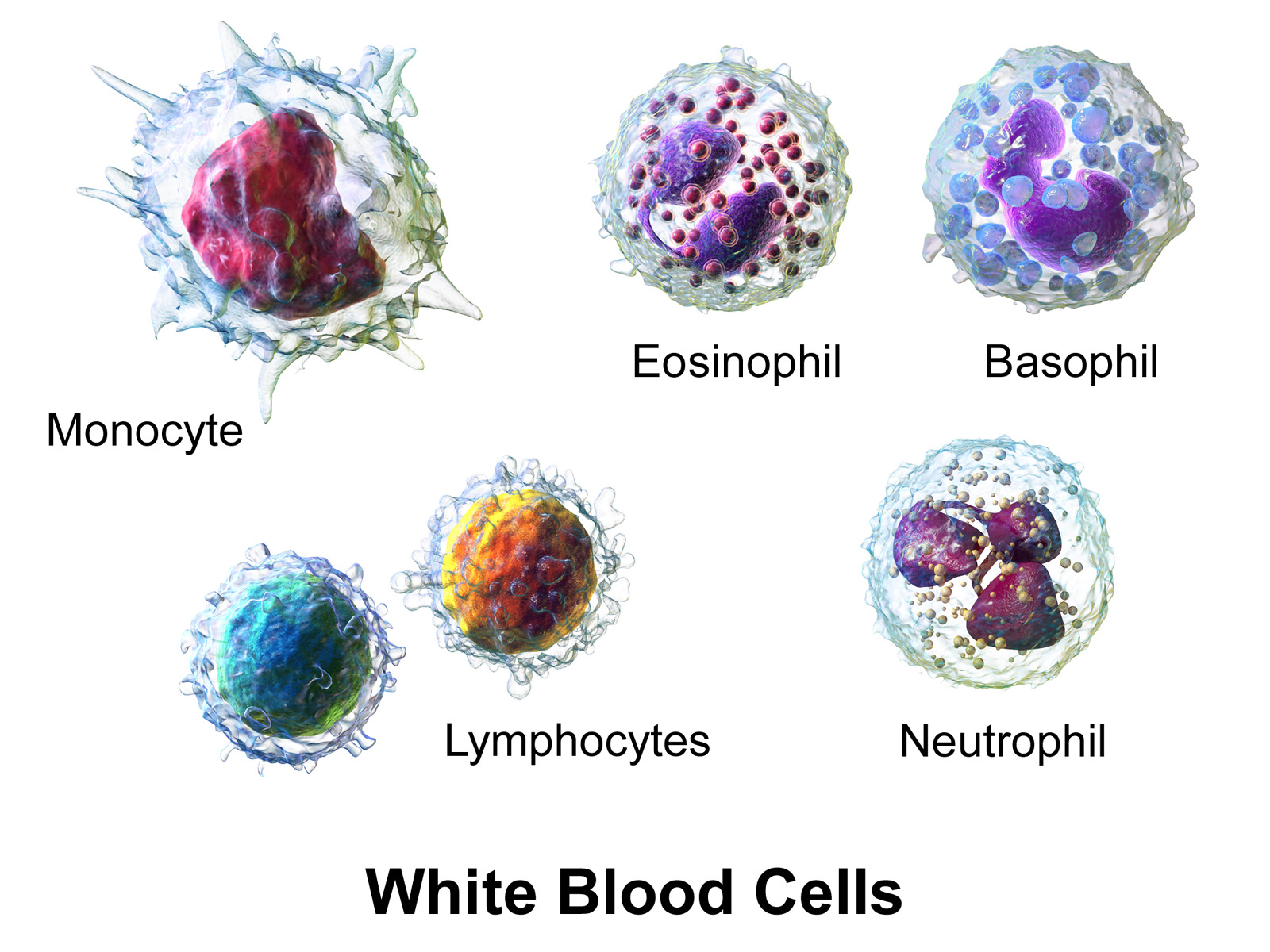Playlist
Show Playlist
Hide Playlist
B- and T-Cell Activation – Lymphocyte Activation
00:01 You’ll now look at the way in which a signal is sent into the B-cell in order to achieve B-cell activation. 00:12 Along with the transmembrane version of antibody on the surface of the B-cell, there are the Ig-alpha (Ig-α) and Ig-beta (Ig-β) molecules with their cytoplasmic tails containing Immunoreceptor Tyrosine-based Activation Motifs or ITAMS. 00:31 But that isn’t the entirety of the B-cell receptor because it’s also associated with other molecules. 00:42 It’s associated with a B-cell co-stimulatory complex, and this consists of several different molecules. 00:48 Leu13, CD21 which is also actually referred to as complement receptor 2 because it is indeed a complement receptor, CD19 which again importantly has ITAMs in its cytoplasmic tail, and CD81. 01:07 So these four molecules, Leu13, CD21, CD19 and CD81 form the B-cell co-stimulatory complex, which together with the transmembrane version of antibody and the Ig-α and the Ig-β molecules are required for B-cell activation. 01:28 If the B-cell has an antibody on its surface that is capable of recognizing a particular antigen; so let’s say that this is a Cytomegalovirus and the B-cell encounters Cytomegalovirus, then what happens is that the antibody will bind to the antigen that it is specific for and more than one B-cell receptor molecule will link together, be cross linked by the antigen. 01:56 They’ll come together, and this will drag those ITAMs in Ig-α and Ig-β nearer to each other. 02:05 And that cross linking of these antibodies by antigen, and therefore the aggregation of the Ig-α and Ig-β together with the B-cell stimulatory complex will lead to protein kinases such as Lyn kinase phosphorylating the tyrosines on the Immunoreceptor Tyrosine-based Activation Motifs. 02:30 And this phosphorylation by kinases will initiate a signaling cascade that ultimately results in activation of the B-lymphocyte. 02:41 So that’s how B-lymphocytes become activated. 02:43 What about T-lymphocytes? Well, it’s a very similar situation. 02:47 Here we have a T-cell receptor on the surface of a T-lymphocyte. 02:52 This is associated with the CD3 molecules, CD3 gamma (CD3γ), CD3 delta (CD3δ) and CD3 epsilon (CD3ε). 03:00 And they all have within their cytoplasmic region, ITAMs. 03:05 Also there will be a homodimer of two zeta chains, again containing ITAM motifs. 03:13 This particular T-cell is a CD4+ T-cell. 03:17 So the CD4 molecule will also be present as part of this complex. 03:24 When the T-cell receptor recognizes the peptide MHC Class II combination that its specific for; and remember CD4+ T-cells recognize MHC Class II molecules, whereas CD8+ T-cells recognize MHC Class I molecules. 03:44 So following this interaction, if the T-cell is specific for that particular peptide MHC Class II combination, various protein kinases including the Lck kinase can add phosphate groups to the tyrosines in the ITAMs; again, initiating a signaling cascade that will ultimately result in activation of the T-lymphocyte. 04:09 Of course, not all T-cells are CD4+ T-cells, some of them are CD8+ T-cells. 04:15 And the situation is very, very similar with the CD8+ T-cell, shown here, using its T-cell receptor to recognize a peptide MHC Class I combination. 04:27 But the signaling events are pretty much identical to those seen with the CD4+ T-cell.
About the Lecture
The lecture B- and T-Cell Activation – Lymphocyte Activation by Peter Delves, PhD is from the course Adaptive Immune System. It contains the following chapters:
- B-Cell Activation
- T-Cell Activation
Included Quiz Questions
Which of the following is a component of the B-cell costimulatory complex? (CD, cluster of differentiation)
- CD21
- CD3
- CD5
- CD15
- CD4
Which of the following best describes the primary role of immunoreceptor tyrosine-based activation motif?
- A component for the initiation of different signaling pathways that lead to activation of immune cells
- A component of the B-cell costimulatory complex
- An antigen-binding site on the surface B cells
- Inhibition of myeloid lineage proliferation
- A key signal mediator for the suppression of human osteoclast differentiation
Which type of major histocompatibility complex (MHC) molecule activates CD4+ t cells and CD8+ T cells, respectively?
- MHC Class II, MHC Class I
- MHC Class I, MHC Class II
- MHC Class II, MHC Class II
- MHC Class I, MHC Class I
- MHC molecules are not involved in activation of T cells.
Customer reviews
5,0 of 5 stars
| 5 Stars |
|
2 |
| 4 Stars |
|
0 |
| 3 Stars |
|
0 |
| 2 Stars |
|
0 |
| 1 Star |
|
0 |
Quick turnaround in answering questions. He really knows what he's talking about; he doesn't speak vague chatter. I like it very much.
Dr Delves explains concepts in such a concise manner that it is so easy to understand and grasp concepts .






